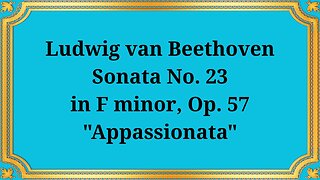Premium Only Content

Joseph Haydn Symphony №93 In D Major
#classicalmusic #JosephHaydn #SymphonyNo93 #DMajor #musicalcomposition #orchestra #classicalcomposers #musicappreciation #musictheory #violin #cello #conductor #classicalconcerts #musichistory #baroque #classicalera #musicperformance #classicalinstruments #symphony #composer
Publication date 1951
Sir Thomas Beecham; The Royal Philharmonic Orchestra
Classical music has always been revered for its ability to evoke emotions and transport listeners to different realms. Among the countless compositions that have stood the test of time, Joseph Haydn's Symphony No. 93 In D Major holds a special place.
Composed in 1791, Symphony No. 93 is part of Haydn's prolific series of symphonies known as the "London Symphonies." These symphonies were composed during Haydn's two visits to London, where he gained immense popularity and admiration for his music. Symphony No. 93 is one of the twelve symphonies from this collection, each showcasing Haydn's mastery of orchestration and his innovative approach to composition.
Symphony No. 93 consists of four movements, each distinct in character and mood.
The symphony begins with a slow and solemn Adagio, setting a contemplative atmosphere. This is followed by the energetic Allegro assai, where the orchestra bursts into life with a lively and spirited melody. The contrasting dynamics and tempos in this movement create a sense of anticipation and excitement.
The second movement, Largo cantabile, is characterized by its lyrical and melodic nature. The orchestra delicately weaves a beautiful tapestry of harmonies, allowing the listener to immerse themselves in a world of serenity and tranquility.
Next comes the Menuetto and Trio, a dance-like movement that showcases Haydn's adeptness at composing elegant and graceful melodies. The playful and rhythmic nature of this movement brings a sense of joy and lightness to the symphony.
The symphony concludes with a lively and spirited Finale - Presto. The orchestra engages in a musical dialogue, with various sections conversing and intertwining with one another. The energetic and fast-paced nature of this movement leaves the listener exhilarated and captivated until the final notes.
Joseph Haydn Symphony No. 93 In D Major holds immense significance in the classical music landscape. It represents the pinnacle of Haydn's compositional career and showcases his innovation and mastery of orchestration. The symphony's seamless blend of contrasting moods, intricate melodies, and engaging rhythms captivates audiences even to this day, highlighting Haydn's ability to create music that transcends time.
Conclusion:
In the vast world of classical music, Joseph Haydn Symphony No. 93 In D Major stands as a testament to the genius of one of the greatest composers in history. Its intricate structure, captivating melodies, and emotional depth continue to captivate audiences, reminding us of the timeless beauty and power of classical music.
You have the opportunity to support the channel:
https://destream.net/live/RadSiarAl/donate
https://www.buymeacoffee.com/6355radsiaral
-
 23:19
23:19
Classical music_Music Inspiration
15 hours agoLudwig van Beethoven Sonata No. 23 in F minor, Op. 57 "Appassionata"
91 -
 LIVE
LIVE
Kim Iversen
2 hours agoNetanyahu Says Armenian Genocide Was Real — But Gaza Deaths Are A “Mishap"
1,656 watching -
 LIVE
LIVE
vivafrei
1 hour agoAnother "Trans" Mass Shooter? Rampage Jackson Keeps Digging? Democrats are Just Awful AND MORE!
2,309 watching -
 1:34:24
1:34:24
Redacted News
2 hours agoLIVE: Minnesota School Shooter’s Shocking Motive Revealed – Plus Trump Targets Soros w AG Ken Paxton
101K69 -
 DVR
DVR
StoneMountain64
5 hours agoHUNTING FOR THE FIRST WIN BACK ON WARZONE
45.5K1 -
 1:09:06
1:09:06
The Officer Tatum
2 hours agoBREAKING: Shooter IDENTIFIED TR*NS , Cracker Barrel CAVES To Pressure + MORE | EP 162
23K31 -
 53:47
53:47
Matt Kohrs
3 hours agoLIVE! Nvidia Earnings Call || NVDA Stock Reaction
18K1 -
 LIVE
LIVE
Tudor Dixon
1 hour agoKarol Markowicz on Freedom, Immigration, and Saving the American Dream | The Tudor Dixon Podcast
60 watching -
 2:03:25
2:03:25
The Quartering
5 hours agoFlag Burning, Free Speech, Church Attack & More With Andrew Wilson
187K278 -
 LIVE
LIVE
The Robert Scott Bell Show
19 hours agoDr. Peter McCullough, Vaccines: Mythology, Ideology, and Reality, Dr. Dan Sullivan, Chiropractic - The RSB Show 8-27-25
194 watching